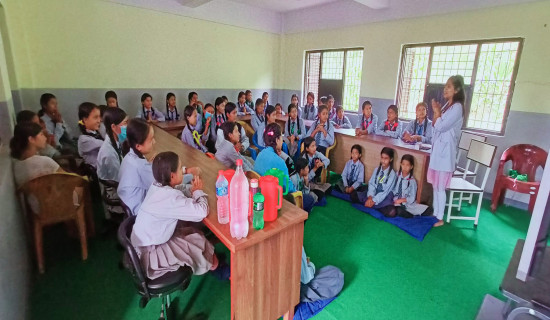- Tuesday, 23 April 2024
Dry Spell's Hazards
This year’s winter season is going to end without a drop of rain in the mid and eastern part of the country, which is a negative phenomenon seen from climate perspective. In the midst of winter, people usually do not want to shiver more in freezing cold that a precipitation brings with because it is bad for human health, especially for the old, children and sick people. But the dry winter is not propitious for people either. People living in urban areas especially in the capital city have been compelled to breathe polluted air. The quality of air is set to further worsen if there is no precipitation. Despite a fall in temperatures, the winter rainfall and snowfall have positive impact on atmosphere, winter crops, and ecosystem and river water volume. In recent years, the winter season is getting drier. As a result, the average annual maximum temperature has increased by 0.056 degree Celsius, according to meteorologists.
This unusual weather pattern has been attributed to the trend of warming on a global scale. Scientists have stated that rising temperature has intensified the earth’s water cycle, resulting in the increased evaporation. This has in turn escalated frequency and intensity of storms. Storm-hit places witness more rainfall but those areas unaffected by storms see less or no precipitation, leading to the prolonged dry spell. Nepal has also experienced the negative aspect of climate change as seen in the abnormal rainfall patterns. This year the country has received minimal percentage of rainfall in the western part and no rainfall in the mid and eastern parts so far. An expert has stated that La Nina, which is an atmospheric phenomenon developing in the Pacific Ocean impacting weather worldwide, has reduced the sea temperature in the eastern Pacific Ocean and increased the temperature in the Indian Ocean.
Expectedly, there should be 60.9 mm of precipitation (3.5 per cent of the annual precipitation) during the winter season. With inadequate or no rainfall, the country is bound to see a decline in crop production. This also increases aridity, causing smog and high chances of wildfires in the spring. The people in the mountainous region live on winter crops such as wheat, pulses, potatoes and mustard, which need at least light rain to grow especially from mid-December to mid-January. Even if there is below-average rainfall, the winter crops are likely to shrink and stunt. The high-altitude regions require snowfall while the low-altitude areas need rainfall which provides the required soil moisture necessary for the crop growth and enhanced productivity. Winter rainfall is vital for the mountain districts which lack proper irrigation facility owing to difficult terrain and lack of water sources.
Winter rainfall and snowfall are necessary for the mountain springs and rivers on which rely the agriculture, livestock production, hydropower development and domestic water use. As the dry spell worsens the air quality index (AQI), the polluted air affects the people with allergies, cough, and asthma and heart problems. The dry season also causes health complications such as burning eyes, irritated nose, sinus, sore throat, wheezing cough and breathing difficulty. The dry spell is likely to cause increasing cases of forest fires. In 2021 alone, 6,537 incidents of wildfires were recorded in Nepal. From 2005 to 2022, as many as 119 people lost their lives to wildfires and 987 houses located in nearby forests were gutted down. Current dry spell calls for caution and preparedness regarding fire safety.

















